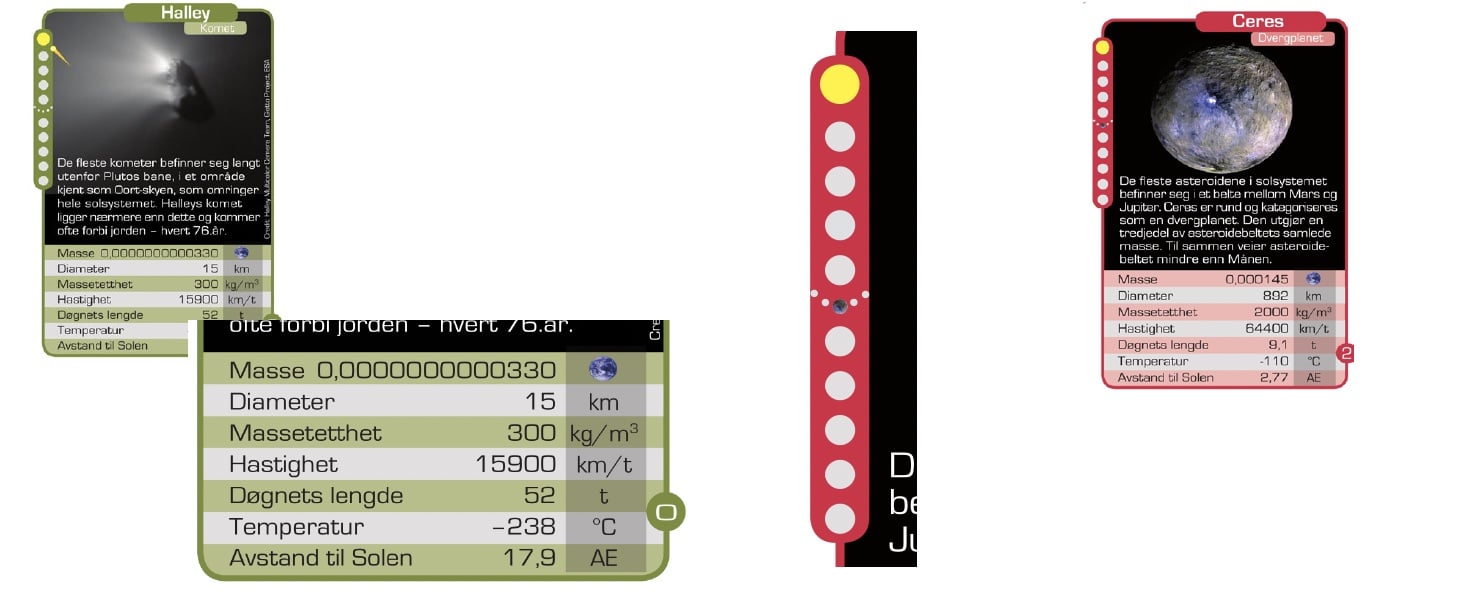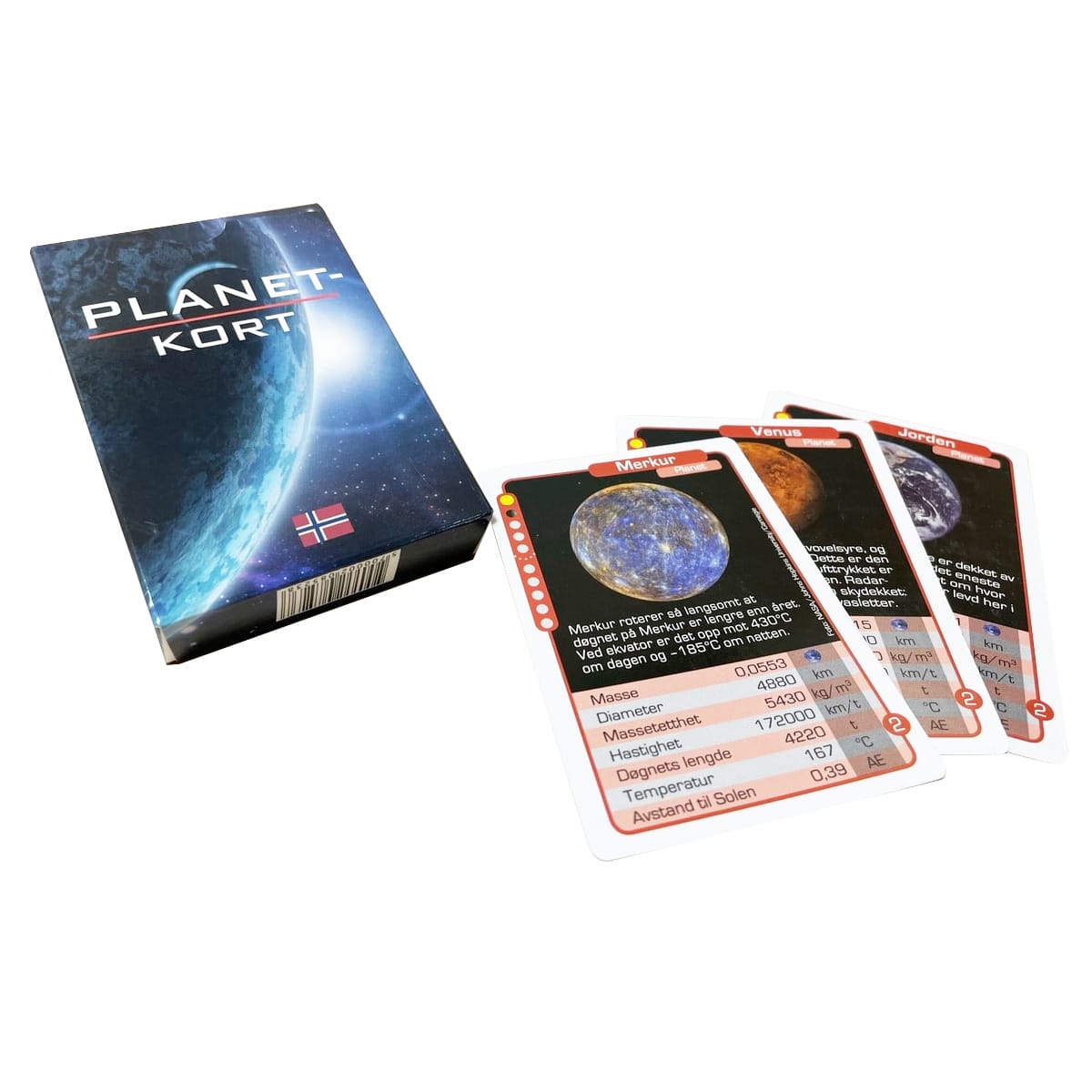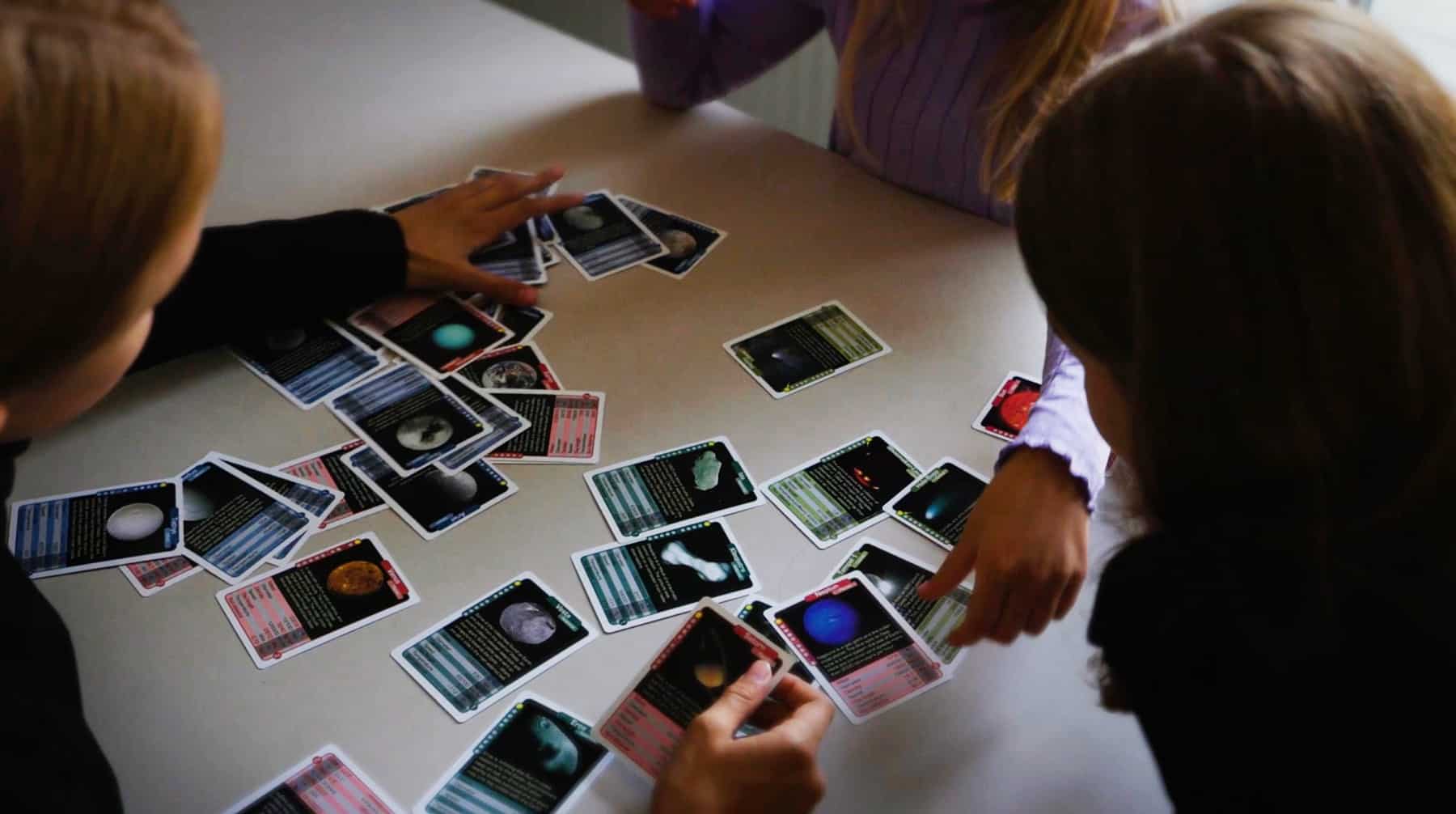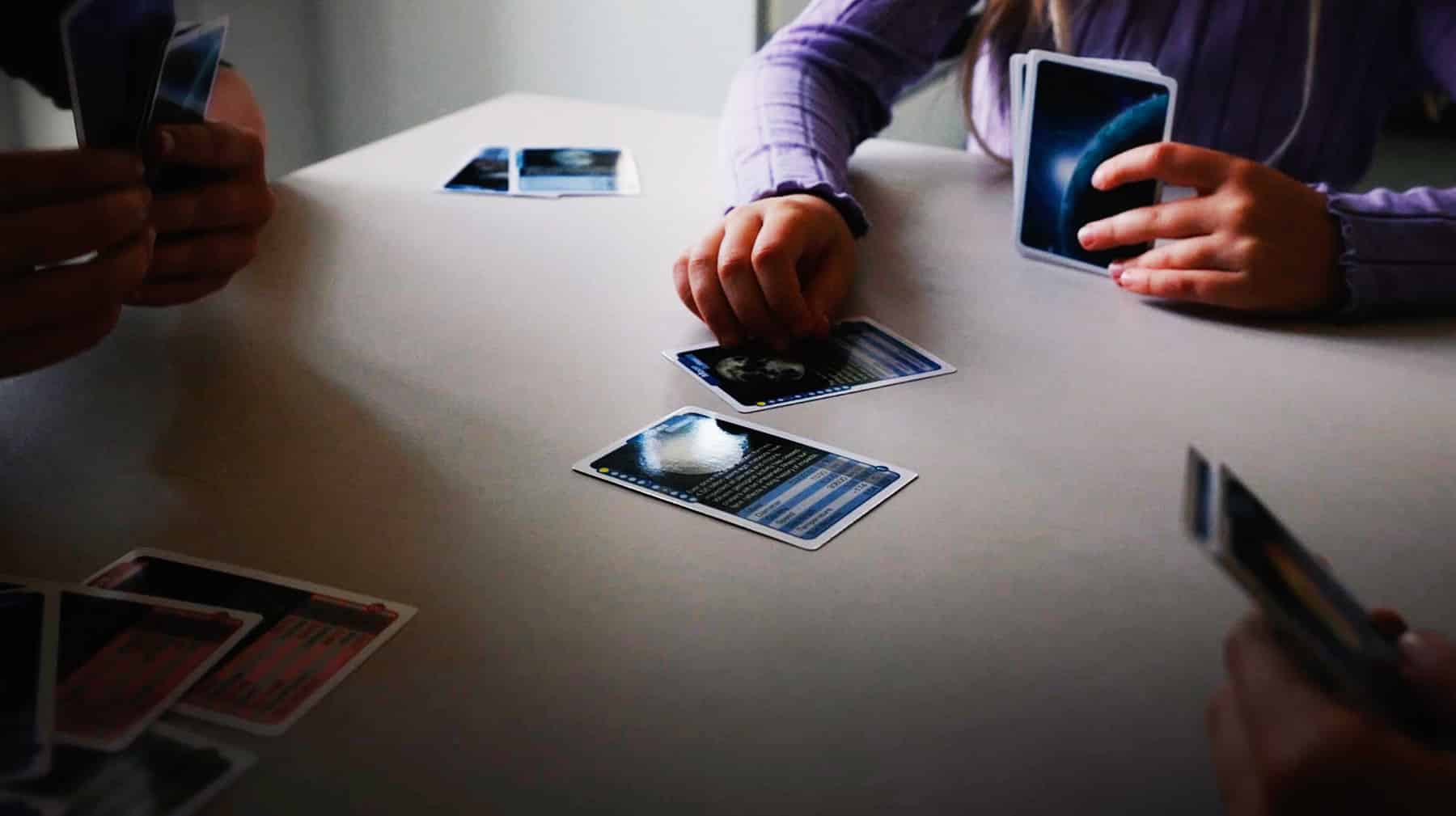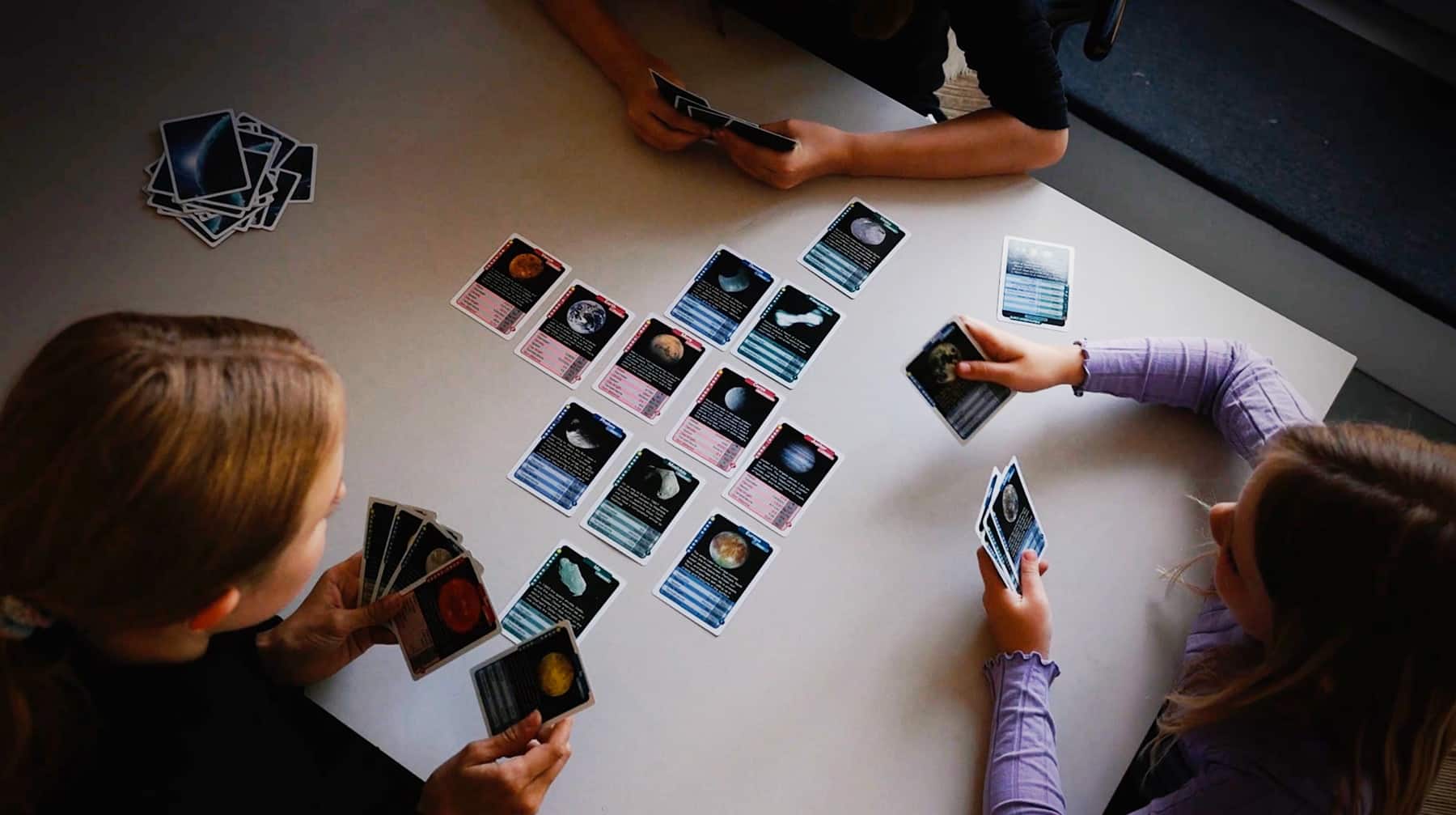Shuffle the planetary cards and deal them into piles, with an equal number of cards in each pile. Each player holds his/her cards in his/her hand so that only he/she can see the top card.
The youngest player starts. He/she reports a property and a value from his/her top card, e.g. "temperature, 137 degrees!".
All players place their top card on the table. The player who has the object with the highest value of the same property wins all the cards placed on the table. The winner adds the cards to the back of their pile and is allowed to choose the property in the next round.
The properties that can be reported are mass, diameter, mass density, velocity, length of day, temperature and distance to the sun. The card with the highest value always wins.
If a round ends in a tie, i.e. several players play cards that have the same value, the "battle of the globes" occurs. Each player places two cards on the table face up and a third card face down. The player with the highest value on the third card wins all the cards.
The game continues until one player has lost all their cards. The winner is the player with the most cards when the game ends.
